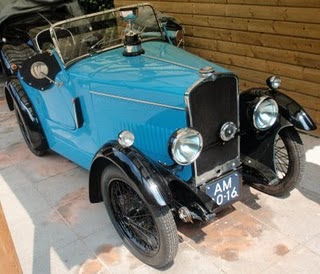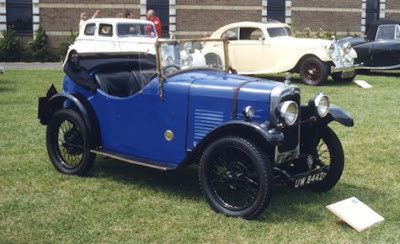The History Of The Triumph Classic Cars with Triumph Super 7 & Super Seven cars models (Triumph Cars Models)

picture Of
Triumph Super 7 Saloon Classic Cars
picture Of
Triumph Super 7 Saloon Classic CarsA range of body styles were available, all made in house. The cheapest model was a two-door four seat tourer, followed by a de-luxe tourer with two coloured body, a two-seater with dickey seat, a two-door saloon, a fabric bodied saloon and at the top of the range, a coachbuilt saloon. Gordon England could also supply a special fabric bodied saloon with sliding roof. The chassis was also supplied to other coachbuilders for fitting their own bodies. Prices ranged from £113 for the chassis to £190 for the Gordon England saloon. On test the car could reach just over 50 mph (80 km/h) and return 40 miles per imperial gallon (7.1 L/100 km; 33 mpg).
Model History
picture Of
Triumph Super 7 Saloon Classic CarsFor 1929 a new body style was released called the Special Sports with pointed tail and there was also briefly a supercharged version with the engine capacity reduced to 747 cc and reputedly able to reach 80 mph (130 km/h) but they were expensive at £250 and few seem to have been sold. Also in 1929 Donald Healey entered a standard car in the Monte Carlo Rally, starting from Berlin but failing to finish, getting stuck repeatedly in the snow in France. Undetered he tried again in 1930 and was the first British car to finish and seventh overall, an amazing result in a car with a top speed of 50 mph (80 km/h).

picture Of
Triumph Super 7 Saloon Classic CarsEven more body styles appeared in 1930 when a two-seat coupé, a de-luxe fabric saloon and amazingly, a landaulet appeared. Wire wheels became standard replacing the artillery type that had been used on some versions. The extensive range was simplified for 1931 with the deletion of the fabric saloons, landaulet, coupé and Special Sport but a Gnat sports tourer and Tickford bodied saloon were added.

picture Of
Triumph Super 7 Saloon Classic CarsWith the deteriorating economic climate a further rationalisation of the range was carried out in 1932 with the
cars being designated Mark I for the tourers and Mark II for the
saloons. A pillarless saloon joined the range. The
car's track grew from 42 to 43.5 inches (1105 mm), the rear springs were changed from quarter to semi elliptic on the
Mk II Saloons and the de-luxe models got a four speed gearbox.








































